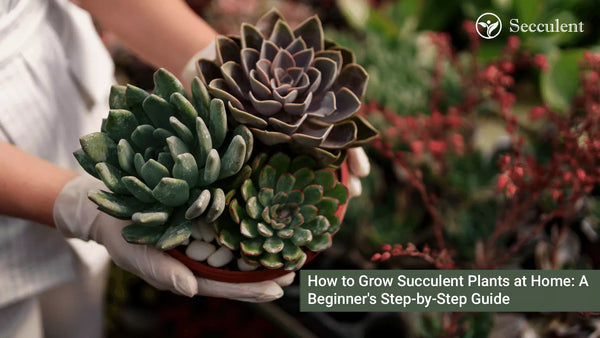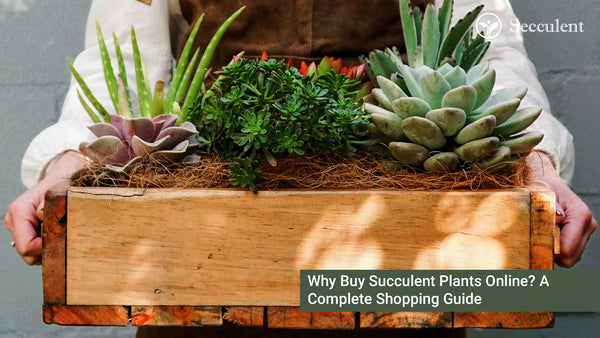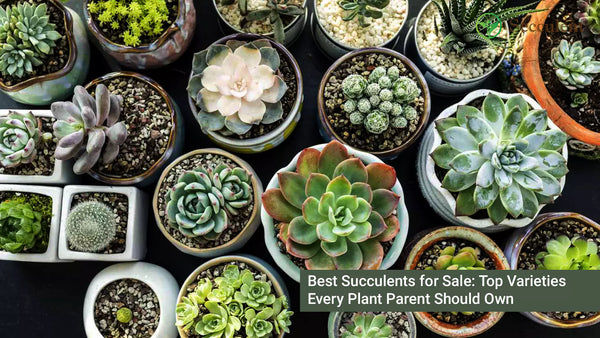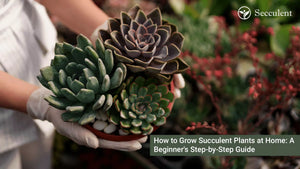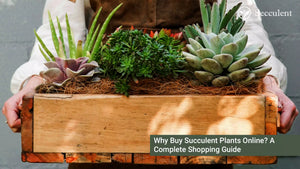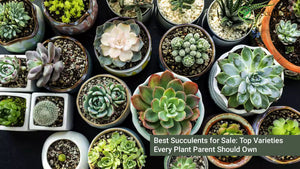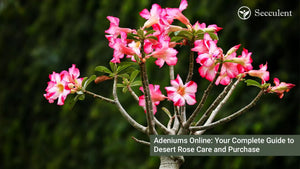Air Plants vs. Succulents: Understanding the Differences

Plants have long been cherished as a way to bring life and character into homes and offices. Among the many choices available, air plants and succulents have stolen the spotlight as two of the most popular options for indoor greenery. Their unique appearances, easy-care requirements, and ability to thrive in a variety of conditions make them favorite picks for plant lovers of all experience levels.
But while both share the hearts of plant enthusiasts, they are far from the same. Curious about which might be right for your space? This post dives deep into the differences between air plants and succulents, covering everything from their biology to their care needs. By the end, you’ll know which plant fits best into your home and lifestyle.
What Are Air Plants?
Air plants, or Tillandsia, belong to the bromeliad family. What sets air plants apart is their ability to survive without soil. Instead of pulling nutrients from the ground, they absorb water and nutrients through tiny structures on their leaves known as trichomes. These fascinating little plants are epiphytes, which means they naturally attach themselves to other surfaces, like trees, rocks, or even telephone wires, instead of growing directly in soil.
Key Characteristics of Air Plants
- No Soil Needed: They thrive on air, light, and moisture, making them incredibly versatile in terms of display options (think frames, glass bowls, or even hanging from strings).
- Compact Size: Most air plants are small, with sizes ranging from just a few inches to about a foot.
- Unique Leaf Texture: Their leaves are often silvery, soft, and covered in a fuzzy layer of trichomes that help them collect moisture from the air.
- Native Habitat: Air plants are mostly found in tropical and subtropical regions like Central and South America.
What Are Succulents?
Succulents are a diverse group of plants well-known for their ability to retain water in their leaves, stems, or roots. This adaptation makes them ideal for dry, arid environments. Some of the most popular succulent varieties include aloe, jade plants, and echeverias. Unlike air plants, succulents thrive in soil and use their roots to absorb water and nutrients.
Key Characteristics of Succulents
- Water Storage in Leaves: Thick, fleshy leaves store water, giving succulents their signature plump look.
- Rooted in Soil: Unlike air plants, succulents need to be planted in well-draining soil to thrive.
- Wide Variety of Shapes and Colors: Succulents are incredibly diverse in appearance, ranging from tall and spiky to short and rosette-shaped. Their leaves can feature vibrant greens, purples, pinks, and blues.
- Global Origins: Succulents can be found in arid regions around the globe, including Africa, South America, and even North America.
Air Plants vs. Succulents: What Are the Differences?
While air plants and succulents both make excellent indoor plants due to their low-maintenance care requirements, they differ significantly in their biology, growing conditions, and aesthetics. Here’s a closer look at the main distinctions between the two.
1. How They Obtain Nutrients
Air plants rely on their leaves to absorb water and nutrients, while succulents depend on their roots and soil. This makes air plants unique in that they don’t require soil to grow.
2. Watering Needs
- Air Plants: These plants need to be soaked or misted regularly. During warm months, they may need water every few days, and during cooler months, once a week may suffice.
- Succulents: Succulents, on the other hand, prefer to dry out completely between waterings. Overwatering is one of the quickest ways to harm a succulent.
3. Lighting Requirements
- Air Plants thrive in bright, indirect light or filtered sunlight. Harsh direct sun can scorch their leaves.
- Succulents love direct sunlight and thrive in areas with abundant natural light. A sunny windowsill is usually the perfect spot for them.
4. Growth and Propagation
Air plants grow slowly and reproduce by forming “pups” or offshoots at their base. These pups can be separated and grown into full plants. Succulents also propagate easily, either from their leaves or by producing offsets, which are sometimes referred to as “baby plants.”
5. Aesthetic Appeal
Air plants have a modern and minimalistic vibe, often displayed in creative and gravity-defying ways. Succulents, however, are sought-after for their variety in shapes and colors, making them ideal for decorative arrangements like terrariums and potted displays.
6. Maintenance Effort
Air plants need a bit more attention in terms of watering habits. If you’re prone to forgetting to water your plants, succulents might be the better choice. Their ability to store water gives you more room for error.
Which Plant Is Right for You?
When deciding between air plants and succulents, consider your lifestyle, your living space, and how much time you want to dedicate to plant care.
Choose Air Plants If:
- You like experimenting with unconventional plant displays (like attaching plants to walls or suspending them from the ceiling).
- You have limited space but want plants that stand out as conversation starters.
- You’re seeking a tropical flair for your indoor décor.
Choose Succulents If:
- You prefer low-effort plants that can survive with minimal watering.
- You want more options in terms of shapes, sizes, and colors.
- You have spaces with lots of natural light.
Ultimately, there’s no wrong choice. Both air plants and succulents can transform a space, serve as decorative elements, and bring a touch of the outdoors inside.
Care Tips for Beginners
Here are some quick tips to ensure your plants thrive:
- Air Plants: Mist them with water two to three times per week or soak them in water for 20–30 minutes weekly. Allow them to dry completely before placing them back in their displays.
- Succulents: Use pots with drainage holes and water them only when the soil feels completely dry. Place them in direct sunlight for at least six hours a day.
Bring Green Into Your Home
Both air plants and succulent offer unique charms and benefits. Whether you're drawn to the gravity-defying elegance of air plants or the vibrant variety of succulents, there’s never been a better time to add a touch of green to your space.
At the end of the day, the best plant for you is the one that fits your lifestyle and makes you happy. Why not explore both types and see which one brings the most joy to your home?


